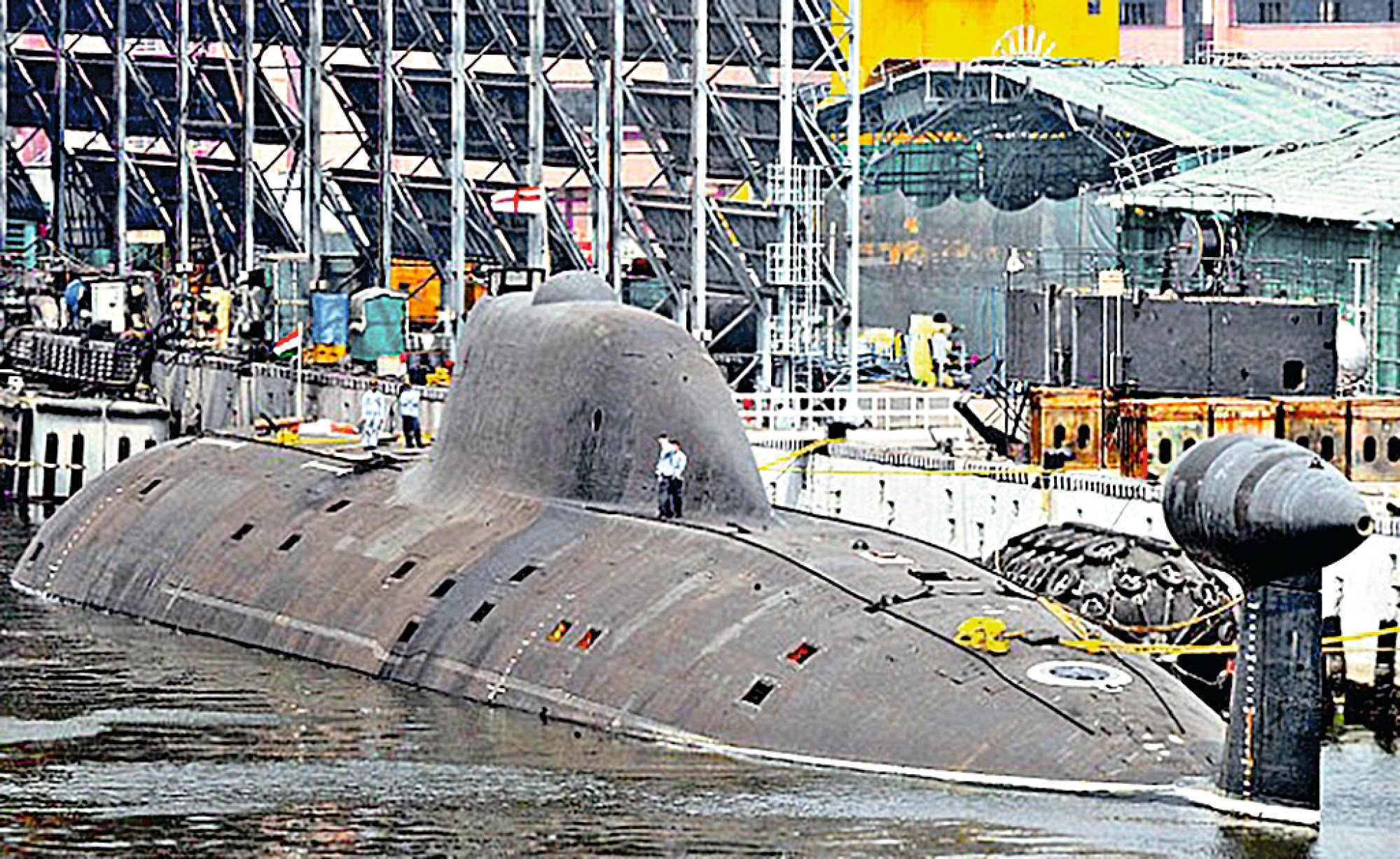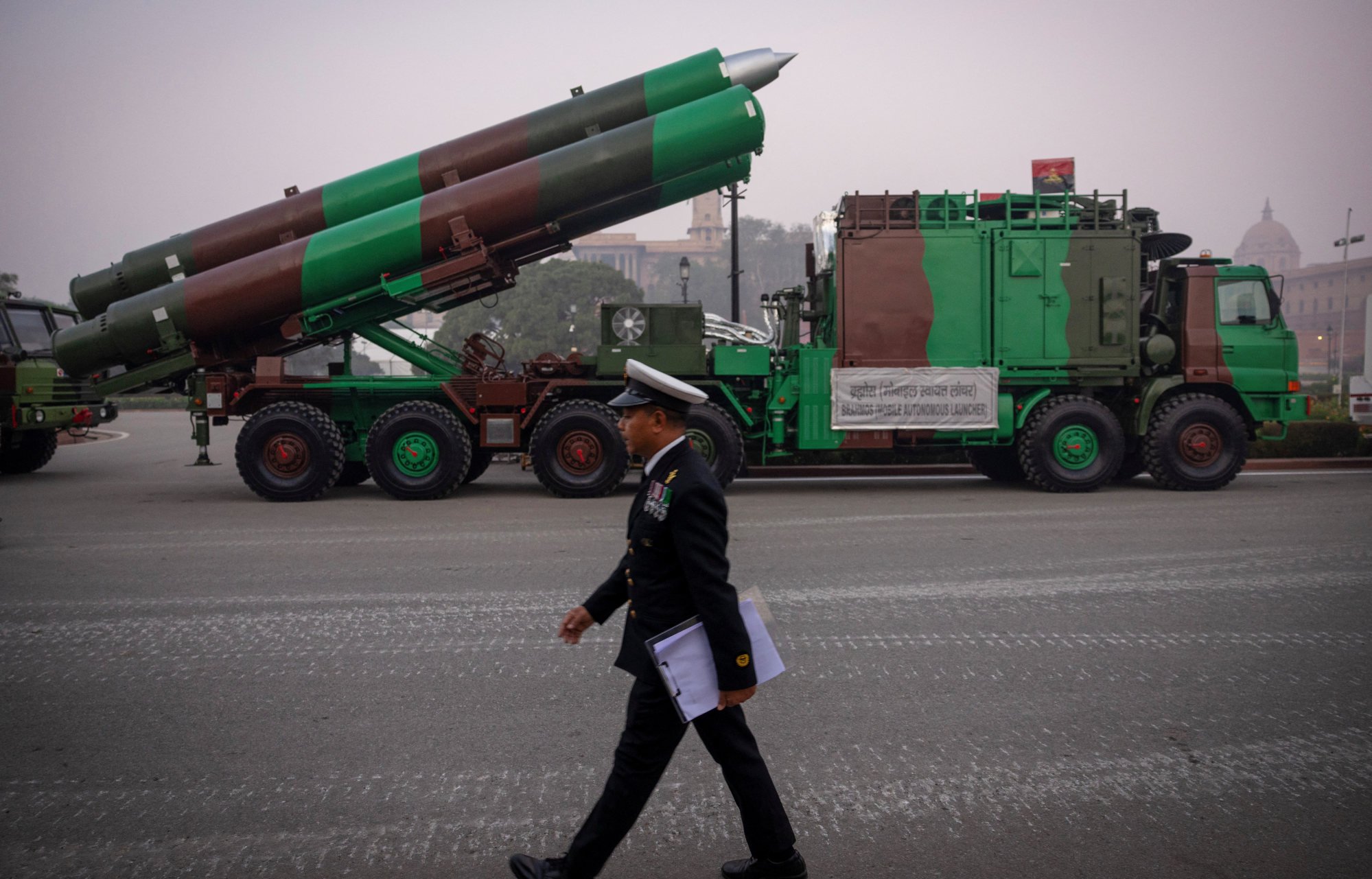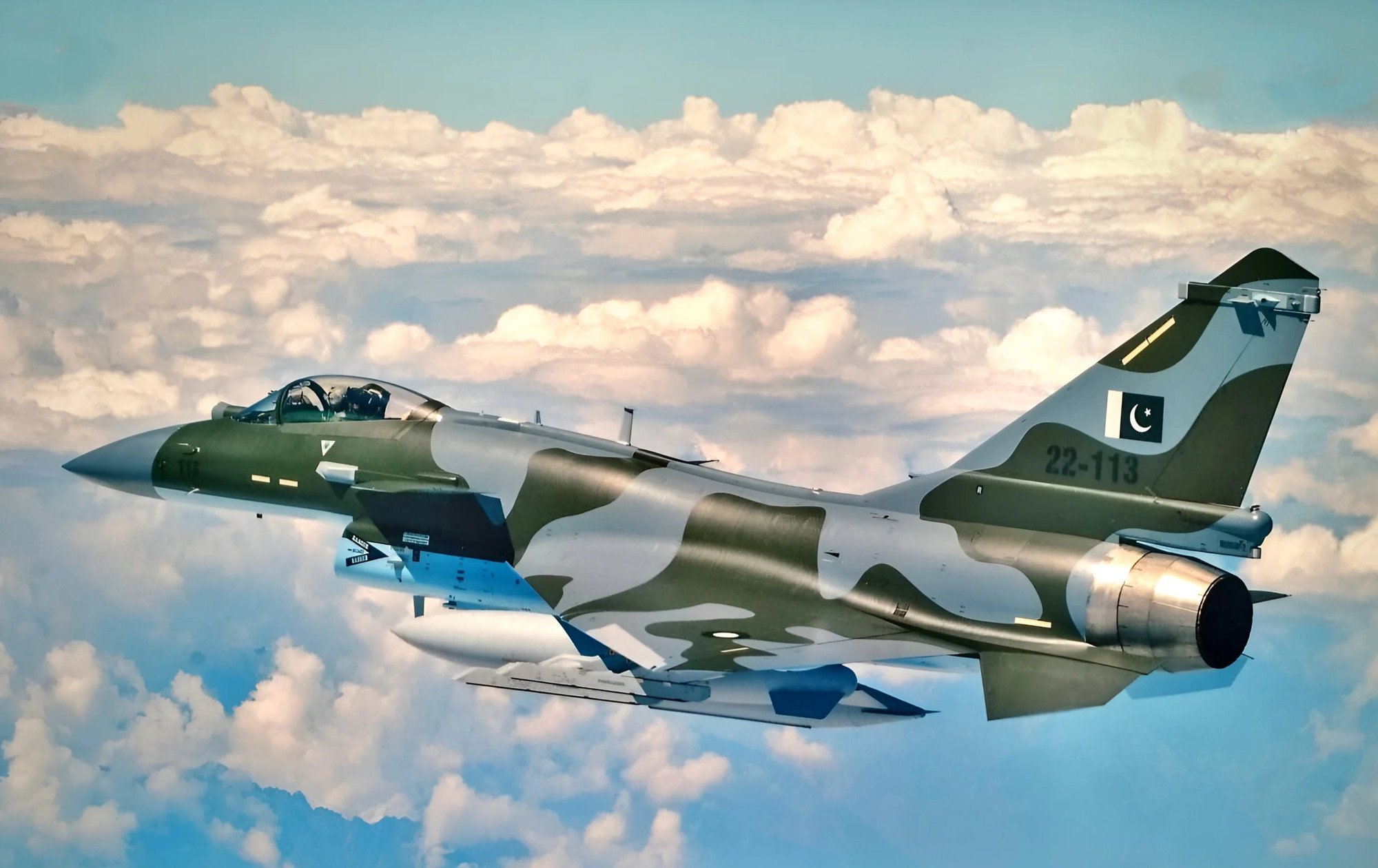India on path to weapons self-sufficiency but still lags behind China: experts
Even as India focuses on developing indigenous defence capabilities, experts say it needs to build up its arsenal to prepare for ‘two-front war’

As India embarks on its path to self-sufficiency in modern weapons production to shore up its defence clout, its military inventory may have already surpassed arch rival Pakistan’s, but still lags behind China.
The drive is marked by New Delhi’s latest bid to acquire the Rs 30,000 crore (US$3.6 billion) Indigenous Quick Reaction Surface-to-Air Missile (QRSAM) system, after it fended off Turkish-origin drones and Chinese-made missiles launched by Pakistan last month at the height of clashes.
The proposal for three QRSAM regiments is expected to be reviewed by the Ministry of Defence in a coming meeting of the defence acquisition council set for later this month, according to Indian news agency ANI.
Foreign-affairs specialist Robinder Sachdev, founder and president of Delhi-based think tank Imagindia Institute, says the QRSAM system is a critical addition to India’s layered air defence network, developed indigenously by the Defence Research and Development Organisation.
“Following the waves of Turkish Bayraktar TB2 drones and Chinese-origin Wing Loong-II UCAVs deployed by Pakistan, India is investing in capabilities that offer rapid mobility, autonomous response, and indigenous sustainability,” Sachdev said.
India’s defence procurement now centred on indigenisation, Sachdev said, adding it was estimated that in the financial year 2024–25, more than 65 per cent of defence capital procurement contracts were awarded to domestic vendors.
The QRSAM is one of several indigenous proposals under the Atmanirbhata (self-sufficiency) initiatives that the Indian government has undertaken.

Last month, Delhi approved the “execution model” for the AMCA – a fifth-generation fighter jet project aimed at enhancing the Indian Air Force’s deep-strike capabilities. India is also manufacturing supersonic BrahMos missiles and opened a new plant in the northern state of Uttar Pradesh last month.
On the naval front, it has commissioned two nuclear-powered submarines since 2024, taking the total tally to three.
Experts believe that though India is far ahead of Pakistan in arsenal, China maintains superiority on the subcontinent.
Rajiv Kumar Narang, a senior fellow at the Manohar Parrikar Institute for Defence Studies and Analysis (IDSA), said: “There is a focus on Atmanirbhata in defence technology. A holistic effort in developing a wide variety of indigenous capabilities, but more needs to be done.”
Analysts say India has long established a numerical superiority over its neighbour and rival Pakistan.
India boasts a naval fleet of 290 vessels including two aircraft carriers, while Pakistan has 109 ships but no carriers, according to data from GlobalMilitary.net. Delhi also operates 16 submarines, including the nuclear Arihant-class, against Islamabad’s eight conventional underwater vessels.
India has over 2,200 military aircraft, of which more than 600 are fighters, compared to Pakistan’s total of about 1,400 planes, including 425 fighters, according to GlobalMilitary.net.
Both countries’ nuclear arsenals are equally matched, with each having about 170 warheads.

C. Uday Bhaskar, a former Indian naval officer and head of the Society for Policy Studies think tank, points to India’s larger geographical size and therefore bigger spending on defence, when it comes to its quantitative superiority over its neighbour.
Bhaskar said that in terms of indigenous defence production, both nations were dependent on external suppliers to a large extent.
“If you review the last four decades, it is Russia for India and the US and China for Pakistan,” Bhaskar said. “Pakistan has benefited from China and now Turkey and has made visible progress in the combat aircraft sector.”
India, however, had enjoyed considerable success in warship design and manufacture, Bhaskar pointed out.
Sachdev said the recent approval of the AMCA fifth-generation fighter execution model signalled India’s firm decision towards self-sustaining aerospace and missile ecosystems.
“Pakistan, in contrast, remains deeply dependent on external suppliers, especially China and Turkey. While it fields capable systems like the LY-80 and HQ-9/P, these are import-based and often come with logistical and upgrade dependencies,” he said.
To meet future challenges, however, India needed more research and development and a “military-civil fusion” when it came to technology, essentially recruiting “techno-finance people into defence finance”, said Narang from IDSA.

Abdul Basit, a senior associate fellow with the International Centre for Political Violence and Terrorism Research at Singapore’s S. Rajaratnam School of International Studies, said India was preparing for a “two-front war” against Pakistan and China.
“China’s military superiority is far ahead of India, but against Pakistan, India has always been ahead. However, things have changed now [after the recent Indo-Pakistan clashes], and India requires a better air defence system, new fighter jets to cater to a two-front war,” Basit said.
India and Pakistan fought a four-day conflict that erupted on May 7, their worst stand-off since 1999, before a ceasefire was agreed on May 10. Pakistan was widely regarded to have seized the upper hand in the clashes, with its military gaining a reputational boost and being lauded in the country for its firm response in the conflict.
The development means that Pakistan is unlikely to sit back – as it did in 2020 during the Galwan valley clashes between India and China – should Delhi end up in a “two-front” war on its borders with both Beijing and Islamabad, according to Basit.
“The 2021 ceasefire [between India and Pakistan] allowed India to move at least 50,000 to 60,000 troops from the Line of Control to the China border. But Pakistan will not hold back now, if there is a two-front war. So, in that case, India needs to build up its arsenal,” Basit warned.